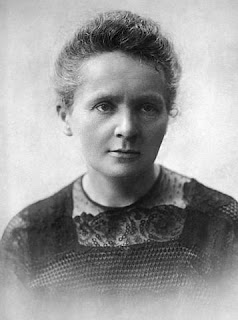Marie Curie was born in Poland when that part of the country was under Russian rule. She was the youngest of five children. She had a brother and three older sisters.
Her sister invited her to come to Paris to live and begin her studies. Manya changed her name to a French name, Marie. At the Sorbonne, the university, she chose to study mathematics and physics. While studying there she lived in a cold apartment and survived on very little food, but when she graduated she had the highest grades in the class. She had a master's degree in physics. Then she was awarded a scholarhip and was able to study further to get a master's degree in mathemetics. She would also later receive a doctorate in physics.
She met Pierre Curie and they married in 1895. With the money a cousin gave her for a wedding present, Marie bought two bicycles, one for herself and one for Pierre. They pedaled through the French countryside on their honeymoon.
Pierre and Marie began experimenting together and discovered two new radioactive elements. She named one of them polonium* to honor her native country Poland, and the other they named radium* . They worked four years preparing a very small quantity of radium in order to prove there really was such an element. They had to work with a ton of pitchblende* uranium ore to accomplish this. The Austrian government had provided the ore, and they only had to pay for transporting it. Marie worked hard carrying very large jars of liquid during those years of experimenting. |


No comments:
Post a Comment